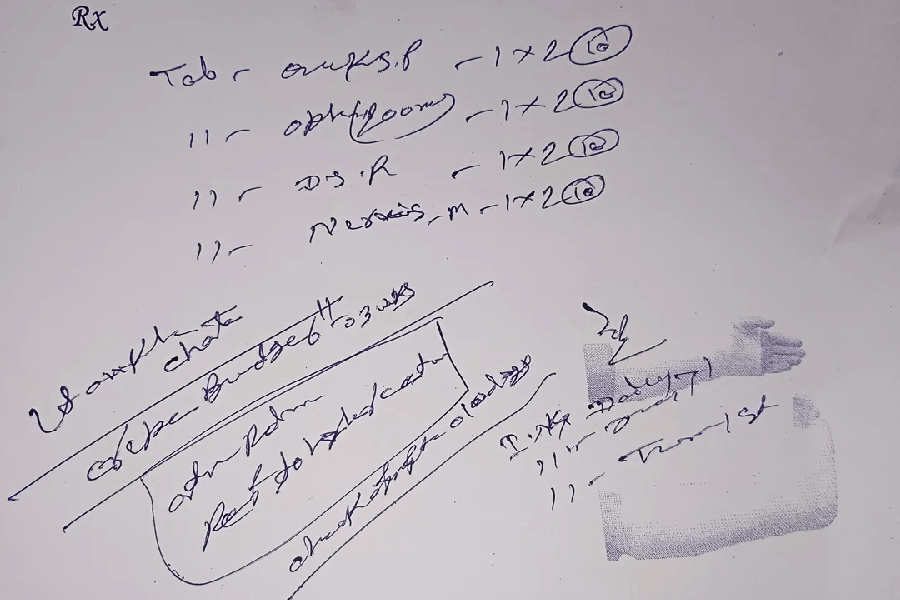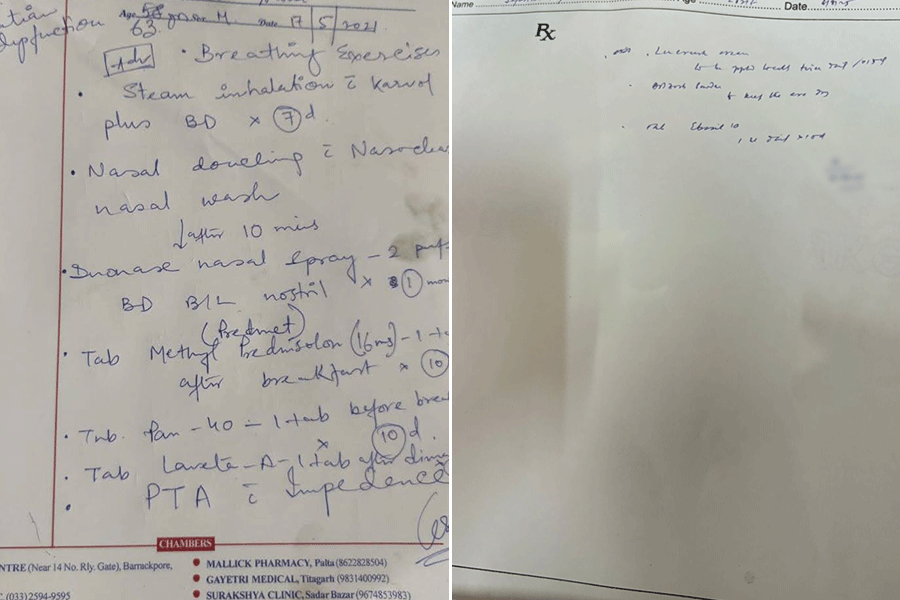A legible medical prescription is a fundamental right, ruled the Punjab and Haryana High Court in August as it revived an issue perhaps as old as the medical profession itself — deciphering what doctors scribble.
Justice Jasgurpreet Singh Puri had reviewed a medico-legal report so incomprehensible that he asked the government to teach handwriting in medical colleges and digitise prescriptions within two years.
The intent was to protect patients from misread drugs. But the court’s prescription for reform has split the medical fraternity in Kolkata. Doctors here agree that unreadable writing can cost lives, yet they say the fix lies in workflow, not in cursive practise.
A ‘cuckoo land’ conversation

TTO Graphics
For Dr Kunal Sarkar, chief of surgery at Medica Superspeciality Hospital in Kolkata, the court’s ruling is hard to implement in a real-world scenario, especially in a country like India.
“This is a very difficult time in our society,” he says. “Many of us are trying to retain some semblance of trust in the wisdom of the Indian judiciary, but it’s very difficult to do right now. The judiciary seems to be living in a cuckoo land.”
Sarkar believes the ruling reflects “no real-life connect” with India’s uneven healthcare landscape. “More than 75 per cent of India is still rural,” he says. “Digitisation when internet penetration is around 60 per cent is delusional.”
Sarkar, who has given more than 30 years to the medical profession, says 80 per cent doctors don’t have a digital system in place. Yet he’s clear that illegibility is inexcusable. “Writing gibberish that no one can understand cannot be excused. It’s our duty to be legible,” he says.
The handwriting class suggestion, though, sounds absurd to Sarkar, a renowned cardiologist. “Let the judiciary speak like people with common sense, not like some deluded oracle of Delphi.”
‘The system makes you scribble’

Shutterstock
Oncologist Dr Pragati Singhal, who practices at Narayana RN Tagore Hospital, says the problem is structural, not innate.
“There are 1.3 million allopathic doctors in India. Do you think all of them inherit bad handwriting? No. It’s the system that makes it so,” she says.
Long hours, endless paperwork and partial digitisation create this situation, according to Singhal. “Either you digitalise the whole thing or nothing.”
“If I finish surgery at 3am and by 6am I have to fill 50 files, speed becomes survival, not negligence,” Singhal explains.
Having switched fully to digital prescriptions in 2017, Dr Singhal says the benefits are clear: clean records, accessible data and reduced errors. But the divide between private and government hospitals keeps the digital dream far. “Most doctors train in government hospitals,” she says. “That’s where the change must start.”
Singhal offers a practical solution. “We need a Make-in-India EMR that connects all government hospitals. Like UPI did for payments, a central healthcare app could link patient data nationwide. With proper implementation, India can go digital in two to three years.”
‘Handwriting classes a utopian concept’

Original images of prescription from two different Kolkata based doctors(not those mentioned in the article) Sourced by Correspondent
Founder of Code Wellness and an internal medicine specialist, Dr Suman Mitra of CMRI Hospital says poor handwriting is not an artistic failure, it is a professional risk.
“Handwriting doesn’t have to be beautiful, but it must be legible to patients and pharmacists,” he says. “If it’s not, it’s dangerous.”
But he finds the court’s proposal implausible. “Sending doctors to handwriting classes is a utopian concept,” he says. “We need awareness and digital tools, not chalkboards.”
For Mitra, digital prescriptions can fix the problem. “They’re clearer, safer and easier to track. Patients follow them better, and doctors can refer back anytime.”
But two years is too little time for a nationwide rollout. “Metros can do it in three to five years. Smaller towns will take five to seven. Younger doctors are already using digital tools; the challenge is helping older practitioners adapt.”
MBBS pressure takes a toll on handwriting

Shutterstock
Orthopaedic trainee Dr Adarsh Shaw, 28, traces the problem back to medical college. “In MBBS, you write endlessly, 30 to 40 pages per paper. You learn to write fast because time is short. That habit never leaves,” he says.
The pressure only grows in crowded government hospitals. “There are days when one doctor sees 500 patients. You don’t have time to write beautifully, you’re just trying to finish. But yes, that’s bad for patients too,” he admits.
Shaw supports digitisation but calls the two-year target “unrealistic”. “We’ll need at least a decade,” he says. “Start with software that works like predictive text, auto-suggesting medicines so doctors spend less time typing. Once people see it saves time, they’ll adopt it.”
The way forward

Shutterstock
The High Court’s order may not have found support from the medical fraternity, but the concern is hard to dispute. Patients have the right to understand their prescriptions. The way forward, however, is not through penmanship drills but through policy and infrastructure, argue Kolkata doctors.
“We all want to be understood, by our patients, by the system, and by the judiciary. But before we fix our handwriting, maybe the system should learn to write its own script better,” signed off Dr Sarkar.
